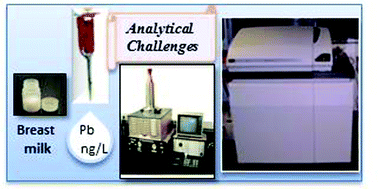
Trace lead analysis performed using ID-CP-MS
A toxin or heavy metal in a mother’s body can transfer to her baby, and even though lead is primarily stored in bones, trace amounts have the potential to enter breast milk and create a dangerous health risk.
Although multiple testing procedures are available, they have demonstrated a wide range of sensitivities arising from sample contamination and preparation issues. Adrienne Ettinger and researchers at Harvard School of Public Health, USA, evaluated three digestion procedures for lead analysis using isotope dilution inductively coupled mass spectrometry (ID-ICP-MS). The primary goal was to see if they could achieve 100% efficiency in any of the digestion processes in the complex media of breast milk, which contains high levels of contaminants such as fat and calcium, and trace levels of lead. Of these, the high pressure asher demonstrated complete sample digestion and had the most consistent lead concentration measurement. By removing analyte contaminants and maximizing the preparation efficiency, they detected trace levels of lead down to 0.2 ng mL-1.
To read more about this research, please access the link below. This paper will be free to read until March 8th.
Comparison of digestion procedures and methods for quantification of trace lead in breast milk by isotope dilution inductively coupled plasma mass spectrometry
Chitra J. Amarasiriwardena , Innocent Jayawardene , Nicola Lupoli , Ramon M. Barnes , Mauricio Hernandez-Avila , Howard Hu and Adrienne S. Ettinger
Anal. Methods, 2013, Advance Article
DOI: 10.1039/C3AY26321E










